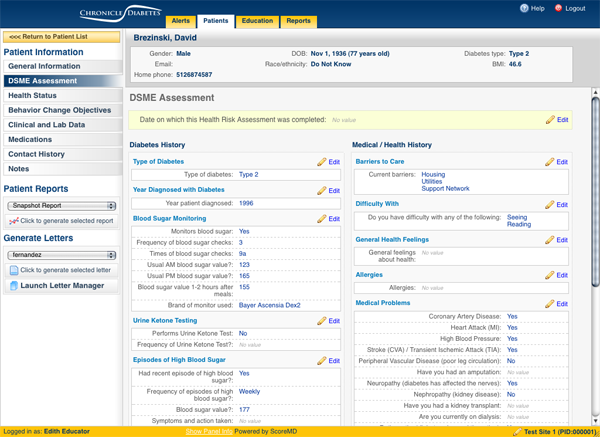List of Project Portfolio Management Software Tools
Post on: 1 Апрель, 2015 No Comment

Part 1: Tool Options
To survive and prosper in today’s competitive, cost-conscious, and risky business environment, organizations must derive the greatest possible value from the projects that they conduct. Success requires doing the right projects, not just doing projects right.
As organizations recognize the need to improve project-selection decisions and to better manage their project portfolios , consulting companies and software vendors have rushed to offer tools for the job. Most of the relevant products are marketed as tools for project portfolio management (PPM). but they may be alternatively described as tools for project prioritization. capital efficiency, enterprise project management. portfolio analysis, multi-project management. asset management. resource allocation, or some other collection of similar terms. The tools being pushed in the marketplace use very different approaches for evaluating projects and recommending project portfolios. Which approach is best?
Many Tools: Which Approach is Best?
This multi-part paper identifies and evaluates currently available PPM tools. As you will see, caveat emptorlet the buyer beware. Although many tools are described in marketing materials as being rigorous and quantitative, few attempt to incorporate well-established project valuation or portfolio optimization algorithms.
Project Portfolio Management
I define PPM as a tool-supported process for selecting projects and managing project portfolios for the purpose of generating the greatest possible value. Under PPM, new projects are formally evaluated, prioritized and selected; existing projects may be accelerated, slowed, or terminated; and resources are allocated and reallocated based on maximizing the value created by the project portfolio. Properly conducted, PPM does not involve making project-by-project choices based on fixed acceptance criteria. Instead, decisions to add or subtract projects from the portfolio are based on the impact on total value to be derived from the project portfolio. The idea behind PPM is to apply to project decisions investment optimization methods similar to those that have proven successful in the world of financial investing.
Modern Portfolio Theory
The revolution in financial investing known as modern portfolio theory was initiated in the 1950’s by Nobel Prize winner Harry Markowitz. Markowitz showed that investors can obtain significantly greater return at lower risk if, instead of choosing stocks and other financial assets based on their individual potentials, they make choices based on calculating the impact on the risk and return generated by the portfolio as a whole. Certain combinations of investments (portfolios) are efficient (they lie on an efficient frontier ) in that they create the greatest possible value for the least risk. Inefficient portfolios should be avoided. Which of the efficient portfolios is best depends on the investor’s risk tolerance ; that is, willingness to accept risk.
What enabled Markowitz to make this breakthrough was a clear understanding of the investor’s true goal; namely, to obtain the portfolio of investments that returns the greatest possible value, considering willingness to accept risk. This perspective led Markowitz to a different and much better strategy for selecting investments. Although Markowitz may not have anticipated it at the time, the same reasoning applies to organizations investing in projects. The organization’s goal is to choose the project portfolio that creates the greatest possible (risk-adjusted) value for the organization. Likewise, this revised perspective leads to a much improved project-selection strategy.
Challenges for Optimizing the Project Portfolio
Despite the analogy between financial and project investing, there are some critical differences. Organizations conduct projects because they believe those projects will produce consequences that are good for the business. Thus, the value of a project portfolio is determined by the worth, to the organization, of the consequences of conducting those projects. The business consequences of projects may include improved cash flows (e.g. cost savings, increases in revenue), but there are other common project benefits that cannot so readily be expressed in dollar terms. For example, projects may be conducted for the purpose of improving worker safety, customer service, relationships with business partners, and organizational capability.
Another key difference relates to uncertainty. The returns from financial investments and projects are both uncertain. However, unlike financial assets, data on past performance is generally not available to help quantify uncertainties over the value returned from candidate projects. Difficulties for measuring project value and quantifying uncertainty posed challenges for applying portfolio theory to projects.
The Remaining Breakthroughs
Early PPM users
Since Markowitz’s time, additional advancements and breakthroughs necessary for optimizing project portfolios have been achieved. These advances include infuence diagrams (for identifying factors infuencing the achievement of objectives), consequence modeling (for estimating or simulating the impact of project decisions on business performance); probability encoding (for obtaining probabilities based on judgments), Monte Carlo analysis and decision trees (for quantifying uncertainty over project outcomes); and multi-attribute utility analysis. real options analysis. and risk tolerance (for quantifying the dollar value of projects and adjusting project value based on organizational willingness to accept risk).
The relevant methodologies still had to wait for improvements in computer technology and software engineering to become fully operational. Government laboratories, the military, research institutes, and others with early access to computing power and understanding of the mathematics involved have been selectively applying the techniques for years. However, only recently have suppliers attempted to create commercial products for PPM.
Project Portfolio Management Tools
Tools for PPM are evolving rapidly, and it is impossible to maintain a complete and up-to-date list of suppliers and capabilities. However, the table below provides a recent snapshot (March 2015) of available products that I have been able to identify. The number of tool options is truly staggering. As indicated, there are now more than 100 tools for PPM! (In addition, there are many project management tools that are now claiming PPM functionality, but I do not include them in my list unless I can identify some support for project selection, prioritization or portfolio optimization.)
Software for Project Portfolio Management














